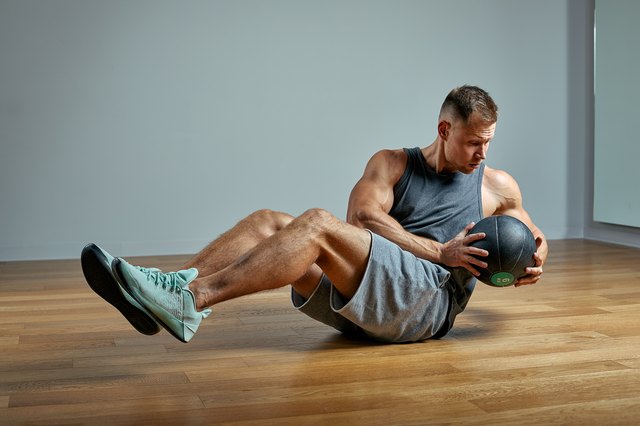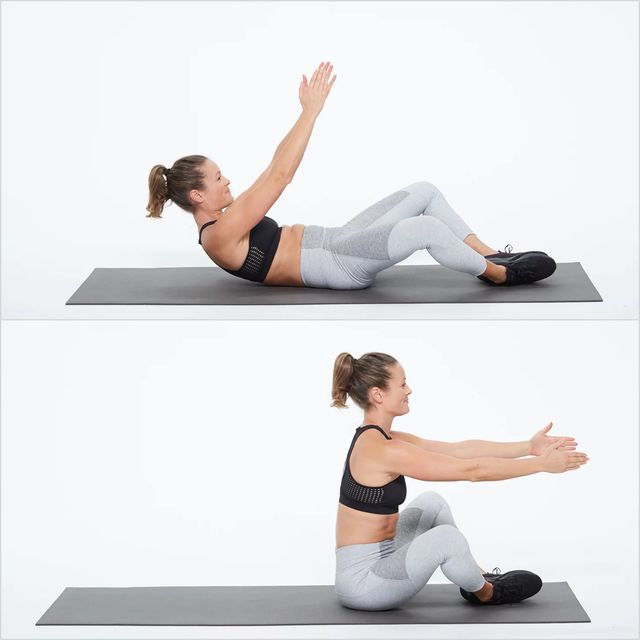Whenever we talk about fitness, experts advise focussing on strengthening the core.
A core is an area around the abdomen, back, and pelvis. Strengthening the core means adding strength to abdominal muscles, back muscles, and the muscles around the pelvis.
Core strength is not only crucial for athletes and sportspersons. A strong core benefits everyone, including children, older adults, and people with sitting jobs. It makes our day-to-day tasks swift and improves overall well-being.
Core muscles are broadly categorized into deep core and shallow core muscles. They support spine stability and protect and reduce stress on the spine.
In this article, we’re going to talk about
- Why is core strength important?
- What are some major core muscles?
- The benefits of strengthening your core
Eager to learn more? Let’s dive in.
Why is Core Strength Important?
When the deep and shallow core muscles are strong and function together normally, spinal stability is maintained, and the load on our intervertebral discs is reduced. Core muscles are used in almost every movement of our day-to-day life.
Weak core muscles might cause dysfunction resulting in neuromusculoskeletal issues like muscle spasms, back pain, and neural compression.
Strong core muscles can prevent injuries or falls during sports and other activities. But it does not mean you do not need a strong core if you are not physically active or a desk job person. Prolonged sitting, typing, or computer use can make our back muscles stiff and sore; therefore, it is advisable to keep your core muscles engaged, loosen up a bit, and breaks in between.
Major Core Muscles

Source: Freepik
The major muscles of the core are:
- Transverse abdominis: These muscles support skeletal alignment, withhold bowel movements, and facilitate contractions during childbirth.
- Multifidus: They are involved in all anti-gravity activity. The multifidus stabilizes the vertebrae as the spine moves.
- Internal and external obliques: Oblique muscles can work both unilaterally and bilaterally. Internal oblique muscles help maintain intra-abdominal pressure in micturition, defecation, and childbirth. While external obliques help rotate the trunk, assist in breathing, and help pull the whole chest downwards.
- Erector spinae: This muscle is located on either side of the vertebral column and helps maintain a steady posture during walking,
- Pelvic floor muscles: They help support the functions of the large intestine and reproductive organs. Pelvic muscles can become weak post-pregnancy, menopause, or due to chronic constipation.
- Abdominal muscles: They protect the spine, help keep the body stable, and hold the organs in place by regulating internal abdominal pressure.
- Diaphragm: Diaphragm muscles are primarily used during breathing and are located below the lungs and heart. These muscles contract when we inhale and relax when we exhale. They also keep pressure on the oesophagus to prevent acid reflux.
11 Benefits of Core Strength

Source: Freepik
One can enjoy these benefits by practising core strength exercises in the daily workout routine.
1. Lower back stabilization
Core exercises are perfect for stabilizing your back and improving balance and alignment. Studies support core strength training as an effective strategy to alleviate chronic low back pain 1.
A study was conducted on 120 subjects aged between 20-60 years suffering from lower back pain. Participants were treated with routine core stabilization exercises for six weeks, and at the end of the study, the participants reported a remarkable reduction in pain 2.
2. Increases adaptability and flexibility
Core exercises focus on strengthening and conditioning deep trunk muscles that work together to stabilize the spine. These exercises also positively affect muscles that improve balance and flexibility 3. It has been observed that young people have neck, back, and shoulder pain predominantly. Experts suggest that core training must be a part of rehabilitation and injury prevention programs to enhance dynamic and static balance.
3. Assists with balance
Balancing is a key component even for performing simple day-to-day activities. Beginners, people on certain medications or with conditions like arthritis may have difficulty coordinating and balancing. It might also occur due to ageing. Core stability training targets the muscles within the abdomen, pelvis, and shoulders, providing the foundation for all arm and leg movements. Progress in balance performance is associated with improvements in leg strength.
A study on older adults observed improved endurance and muscle strength after introducing a 6-week core strengthening home exercise program 4.
4. Better posture
Weak and unbalanced core muscles might result in slouching. A good posture not only helps us breathe better but minimizes everyday wear and tear on the spine. A strong and upright posture always leaves a powerful and confident impression.
5. Better exercise technique
Core exercises strengthen posture and coordination, helping us understand and perform exercises with a correct and better technique. The chances of injuries and muscle soreness are reduced, enabling the person to perform heavy thrust movements easily.
6. Improves stability
Balance exercises are essential as we age. Core training enables the body to move freely in any direction or stand at one point without losing balance, like climbing stairs or lifting heavy weights. All the muscles are engaged better; as a result, the strain on muscles and joints is also reduced.

Source: Freepik
7. Increases power
Core exercises are the best for boosting power. The core plays a significant role in generating power during sports like boxing, mixed martial arts, etc. A strong core is also needed to transfer power during activities like launching a kick or throw. Energy is transferred through the core into the upper body ending up at the shoulders, arms, and wrist.
8. Supports strength training
Core stability is required to lift heavy weights. Strong core muscles are necessary to strength train effectively. A strong core means a better foundation to bear heavy weights during strength training.
9. Aids in healthy ageing
Ageing takes a toll on strength, coordination, and balance ability. A strong core eases back and joint pain, improves posture and balance and curtails injury risk and fall fractures.
10. Increased core muscle power
Core exercises train the muscles of the lower back, abdomen, hips, and pelvis. They amplify core muscle health so one can train for a long duration with correct posture and breathing control.
11. Make running more convenient
Core strength is necessary if you are a sprinter, marathon runner, or triathlete. It can aid your running form, speed, and respiration. Core muscle fatigue can impair high-intensity running performance.
Core muscles allow multi-joint muscles to work more efficiently to control spine motion. The higher precision and steadiness of distal extremities may cause it.
To determine the effect of core strength training on running ability, 28 runners practised core exercises for six weeks. A significant reduction in the completion time was observed in the 5000 m run at the end of the study 5. Therefore, it won’t be wrong to say that core workout benefits running.
Exercises To Strengthen Core
Forearm Plank

Source: Freepik
This exercise toughens the core by targeting the transverse abdominis (the muscle below your belly button), the rectus abdominis (the large muscle in the midsection), and the internal and external obliques (the side muscles of the abdominal region).
Panther Shoulder Tap

Source: Freepik
This exercise targets deep core muscles and obliques. It is a compound exercise making it a full-body workout. A panther shoulder tap can help lose weight, balance, and coordination and prevent backaches and pain. It can support weight loss and improve sleep quality, mood, and mental health.
Russian Twist

Source: livestrong
The Russian twist is superb for strengthening the core and shoulders. This exercise targets muscles like obliques, rectus abdominis, erector spinae, hip flexors, and latissimus dorsi. Russian twist can help lose belly fat; it strengthens the lower back and reduces stiffness and pain.
Butterfly Sit-Up

Source: Skimble
Everyone, including sedentary people and athletes like cyclists, swimmers, and runners, desires a strong lower back. Butterfly sit-ups are fantastic exercise to enhance flexibility. Better flexibility offers an increased range of motion leading to a reduction in injuries. It also improves blood circulation and concentration power and relieves stress. Butterfly sit-ups are perfect for increasing lower back strength.
Dead Bug

Source: Skimble
Dead bug exercises help build a rock-solid foundation for athletic movements and spine protection. If you commonly experience lower back pain, this exercise is a must-try. Experts also recommend dead bug exercise for people with arthritis and Parkinson’s disease and those aiming to improve muscle function.
Key Takeaways
A strong core is essential for a fitter, healthier and more productive lifestyle. All the exercises shared above are helpful. However, you are advised to do them under the observation and advice of a registered personal trainer only.
If you’ve any more questions regarding strengthening your core, please share them with us in the comments section below.
What are the benefits of developing core strength?
Core strength is vital to lessen back pain and injuries, gain endurance, improve flexibility, and stabilize the spine.
Why is core training considered important for building strength?
A strong core is required for lifting heavy weights, deadlifts, and barbell rowing, which are common exercises for developing strength. Poor core strength might result in poor exercise form increasing injury risk.
Is core strength the same as abs strength?
No, they are not the same. Ab strength refers to strengthening the abdominal muscles. Core strength addresses the muscles of the pelvis, back, hips and diaphragm, and abdomen.
How often should I do core exercises?
One can perform core exercises twice or thrice per week.
How and why do you train the core?
Including core training exercises in the workout routine is vital for better balance, stability, flexibility, and spine protection. One can train the core by practising plank, sit-up, crunch, bird dog, and mountain climber exercises.
What is the best way to develop core strength?
The best way to build up core strength is by including core exercises in your training routine at least twice a week.
What are the benefits of developing strong back muscles?
We need strong back muscles to improve posture, stabilize the spine, and minimize injury risk and back pain.
How long does it take to get a strong core?
Depending on the workout intensity and diet, it may take four to eight weeks.
What is the quickest way for me to develop a strong core?
A well-balanced diet with a well-planned core training workout schedule is the key to building a solid core.
How can I increase core strength at home?
One can easily core train at home by doing the exercises like planks, sit-ups, crunches, mountain climbers, and flutter kicks.
How does a strong core help with running?
Core strength has been shown to improve running by increasing torso stabilization, improving balance, and moving smoothly while expending fewer calories.
What are the most effective core exercises for men?
Plank
Reverse Crunches
Hanging Leg Raise
Hip Bridge
Ab Wheel Rollout
Will I benefit from doing only core and cardio exercises?
Core and cardio exercises come with a lot of health benefits. However, it is also better to strength train to avoid reaching a plateau, strengthen joints, and reduce the risk of overtraining.
References
- Chang, W. D., Lin, H. Y., & Lai, P. T. (2015). Core strength training for patients with chronic low back pain. Journal of Physical Therapy Science, 27(3), 619–622[↩]
- Akhtar, M. W., Karimi, H., & Gillani, S. A. (2017). Effectiveness of core stabilization exercises and routine exercise therapy in management of pain in chronic nonspecific low back pain: A randomized controlled clinical trial[↩]
- YAKUT, H., & TALU, B. (2021). The effect of core strength training on flexibility and balance in sedentary healthy young individuals. Baltic Journal of Health and Physical Activity, 13(4), 89–97[↩]
- Kahle, N., & Tevald, M. A. (2014). Core Muscle Strengthening’s Improvement of Balance Performance in Community-Dwelling Older Adults: A Pilot Study. Journal of Aging and Physical Activity, 22(1), 65–73[↩]
- Sato, K., & Mokha, M. (2009). Does Core Strength Training Influence Running Kinetics, Lower-Extremity Stability, and 5000-m Performance in Runners? Journal of Strength and Conditioning Research, 23(1), 133–140[↩]



Pingback: Core-Strengthening Exercises Paired with Protein-Rich Meals – Discover the Cure Within